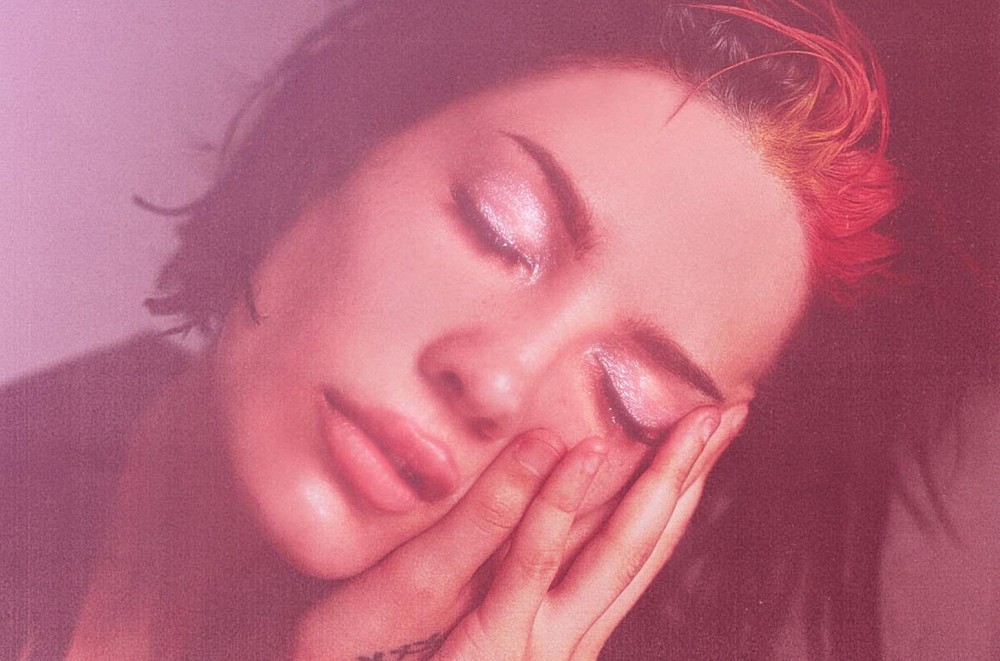In his 2007 review of Cameron Crowe’s Elizabethtown, film critic Nathan Rubin gave birth to the Manic Pixie Dream Girl as we know her today. In describing Kirsten Dunst’s character, Rubin coined the trope of a fictional woman who exists only in the minds of the emotionally-vulnerable men surrounding her, her sole purpose being “to teach broodingly soulful young men to embrace life and its infinite mysteries and adventures.”
The label ended up sticking, especially to the quirky female leads of indie darling films like Garden State or Annie Hall. The MPDG phenomenon has since made its way out of the fictional landscape and into real life, landing squarely on the shoulders of female entertainers as a means of labeling and dismissing them for their perceived vapidity.
Since the early stages of her career, Halsey has publicly struggled with the insinuations of this label. Though she’s occasionally taken her alleged status as an MPDG in stride, the 25-year-old pop superstar has repeatedly made clear that her existence as a modern pop star is not defined by the men or women around her -- she contains multitudes.
So when Clementine, the Manic Pixie Dream Girl at the center of Michael Gondry's Eternal Sunshine of the Spotless Mind, appears at the end of Halsey's opening on Manic to rebuke the very idea of the MPDG, you know she's speaking on behalf of Halsey. "I'm just a f--ked up girl who's lookin' for my own piece of mind," Kate Winslet's character spits. "Don't assign me yours."
On her third studio album, Halsey performs a musical biopsy, opening up her chest and examining its contents with surgical precision. In that sense, the album is infused with pain -- every song on the record is soaked in a sense of anguish as the star carefully studies each facet of herself.
Gone are the singer’s signature metaphorical devices; Manic has neither a post-apocalyptic dystopia nor a Shakespearean allegory to serve as its backbone. Instead, Halsey takes an antithetical approach to her previous work, stripping away the veneer of her persona and introducing fans to her true self, Ashley Frangipane — in fact, she literally opens her album with one of its most introspective songs, titled “Ashley”.
The cathartic rage exhibited on the singer’s feminist firebrand anthem “Nightmare” (not featured on the album) remains largely absent from Manic, instead replaced in spots by muzzled frustration. “I Hate Everybody” has the sound of a potentially cutesy love song, while the lyrics see the singer bitterly swearing off love through gritted teeth. “Killing Boys,” meanwhile, sees the star calmly but firmly vowing revenge against a cheating ex as a subdued synth-pop beat wanders through the background.
In lieu of rage, the songs are instead indicative of a quieter sadness as she searches the contents of herself for answers to the question of why, after all of her success, she still feels this way. In that sense, Halsey's songwriting on this album feels more focused than ever. On "3am," the star's self-awareness of her self-destruction becomes apparent when she wails "I really need a mirror that'll come along and tell me that I'm fine." Manic's penultimate track "Still Learning" acknowledges the star's own guilt over her mental state when she sings "I should be living the dream/ But I go home and I got no self-esteem."
It’s fitting, then, that on an album focused on exploring the singer’s innermost turmoil, her songs featuring collaborators are deemed "interludes." When Dominic Fike pops in to encourage Halsey to break up with her lover, or when BTS' Suga shows up to spit his rapid-fire bars about the nature of dreams, they do so in the form of short, sweet offerings — this is not their story, after all. The exception to that rule, though, may be Alanis Morissette, as “Alanis’ Interlude” sees the pair delivering a drum-heavy ode to gender-bent queer love, as Halsey declares “Your p---y is a wonderland” while Alanis wails out that she’s “tired of all these labels.” The track feels like two women who completely understand one another making their message heard.
Some of Manic’s best moments come when Halsey strips everything else away just to let the listener experience exactly what she's feeling. Take, for example, “More,” the heart-wrenching lullaby written to a baby Halsey hasn't been able to have yet; when Halsey asks aloud, “Would you know it right away/ How hard I try to see your face?/ A little screen, a photograph, mine to take,” it lands like an arrow into your bleeding heart.
On album closer and standout “929,” Halsey finally lets it all out. Laying syncopated rhythms against a steady melody, she lists off her struggles with quitting smoking, living up to her fans expectations, purchasing real estate, losing friends, falling out of love and everything else in between before making her own stunning conclusion: “I'm still looking for my salvation.” Through all of the pain and strife of Manic, Halsey’s ultimate realization is that she’s still a lost soul -- but at least she has the pieces of a roadmap to guide her forward.
Nowhere on Manic does Halsey capitulate to the shallow desires of anyone other than herself. She never offers up a sanitized, test-group-approved image of the girl who can help others learn to lighten up. Halsey's Manic is what happens when the Manic Pixie Dream Girl is finally given agency over her own story; it's messy, it's complicated, it's melodramatic. And it's also beautiful.
